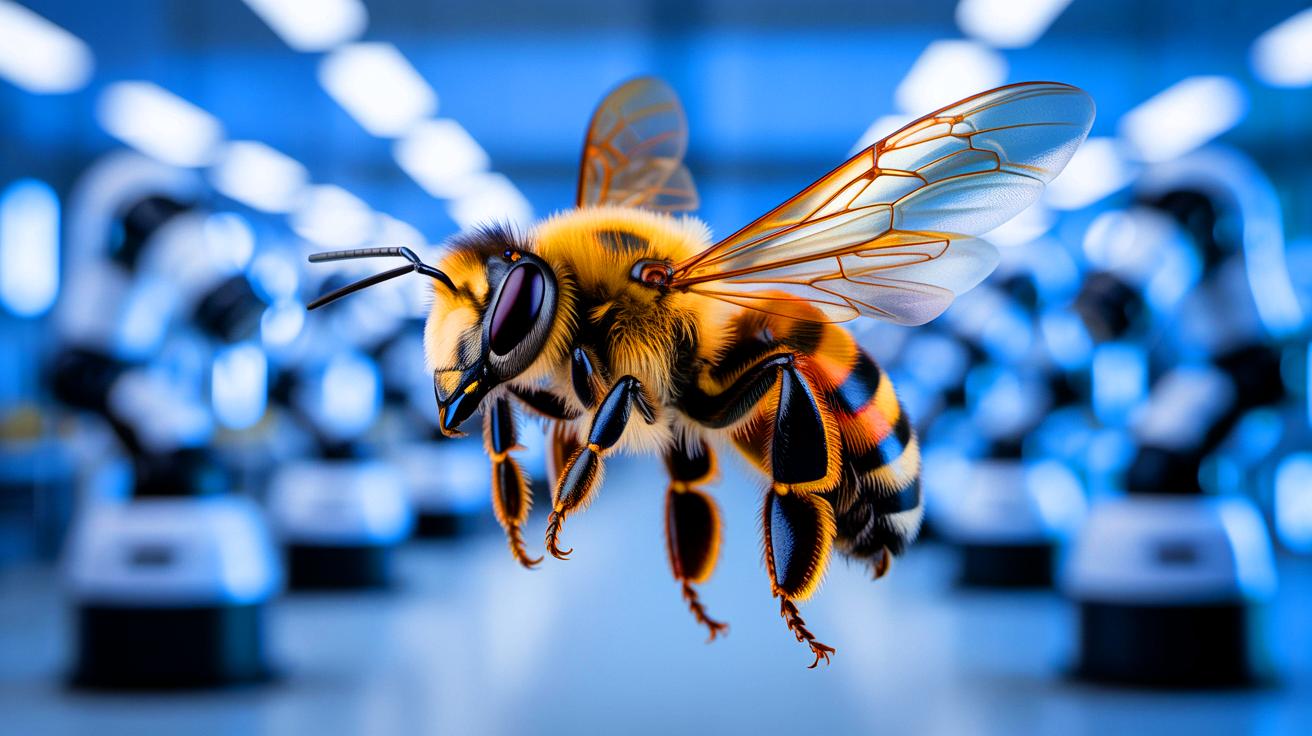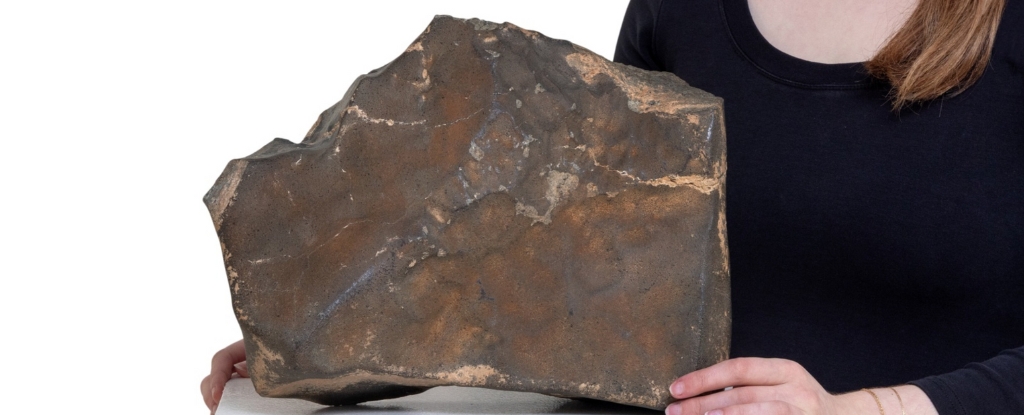
Mineral-rich layers of clay suggest that ancient life could be possible on the Red Planet
Viewed by
You are the first to view
Rare Exploding Star Discovered by Citizen Scientists in Major Breakthrough - The Daily Galaxy
7/6/25 at 7:38am

Citizen scientists have played a pivotal role in the discovery of the rare exploding star GOTO0650, shedding new light on the mysteries of cataclysmic stellar systems.
Viewed by
You are the first to view
Rocket Scientists Hooked Up ChatGPT to the Controls of a Spaceship, and the Results Were Not What You Might Expect - Futurism
7/6/25 at 7:38am

ChatGPT could perform surprisingly well when put in charge of navigating space inside a simulated spacecraft, researchers have found.
Viewed by
You are the first to view
Live Science crossword puzzle #1: Largest organ in the human body — 9 across - Live Science
7/6/25 at 7:38am

Test your knowledge on all things science with our weekly, free crossword puzzle!
Viewed by
You are the first to view
At 4.20m, the Largest Great White Shark Ever Tracked Is Heading Toward U.S. Shores – What’s at Risk? - The Daily Galaxy
7/6/25 at 7:38am

A record-breaking great white shark has been spotted off the East Coast, raising concerns as it moves closer to popular beach areas. Known as Contender, this massive predator is making waves with its unprecedented migration.
Viewed by
You are the first to view
Curiosity Cracked Open a Rock on Mars And Discovered a Huge Surprise - ScienceAlert
7/6/25 at 7:38am

A rock on Mars spilled a surprising yellow treasure after Curiosity accidentally cracked through its unremarkable exterior.
Viewed by
You are the first to view
Biting the 'Bullet': Amazing new JWST photo shows titanic collision of galaxy clusters - Space
7/6/25 at 7:38am

It's another step on the road to one day discovering what dark matter could be.
Viewed by
You are the first to view
Satellite spies both ISS and China's Tiangong space station | Space photo of the day for July 4, 2025 - Space
7/6/25 at 7:38am

Both stations are hubs of scientific research.
Viewed by
You are the first to view
“They Outsmarted Us Again”: Bees’ Hidden Learning Trick Could Revolutionize How Robots See and Understand the World - Rude Baguette
7/6/25 at 7:38am

IN A NUTSHELL 🐝 Bee flight patterns enhance visual perception, offering insights into advanced cognitive processes. 🔍 Research showcases how even tiny brains can perform complex computations, challenging assumptions about brain size and intelligence. 🤖 Rob…
Viewed by
You are the first to view
Jurassic fish choked to death on squid-like cephalopods, fossil study reveals - Phys.org
7/6/25 at 7:38am

A study by Dr. Martin Ebert and Dr. Martina Kölbl-Ebert examined the remains of some 4,200 Tharsis fossil specimens. They found that some of these fish, all of which were subadults, would occasionally attempt to or accidentally swallow belemnites (squid-like …
Viewed by
You are the first to view
It moves like a cat, climbs like a primate and spends much of its time high up in trees — meet the world's weirdest dog - BBC Wildlife Magazine
7/6/25 at 7:38am

The bizarre fox that's loaded with quite un-fox-like adaptations for life high in the canopy.
Viewed by
You are the first to view
How to Make the Biggest Splash, According to Science - WSJ
7/6/25 at 7:38am

Cannonball, belly-flop or manu jumping? Physicists study the splashiest way to hit the water.
Viewed by
You are the first to view
Whale Valley: The whale graveyard in the Sahara desert that shows they once had feet and toes - Live Science
7/6/25 at 7:38am

Egypt's Whale Valley, or "Wadi Al-Hitan" in Arabic, holds more than 400 primitive whale skeletons that offer a snapshot of the evolution of these creatures from land-based to marine animals.
Viewed by
You are the first to view
NASA Rover Finds Unbelievable Evidence of Life’s Potential on Mars – A Discovery That Changes Everything - The Daily Galaxy
7/6/25 at 7:38am

NASA's latest findings on Mars are shaking up everything we thought we knew about the planet. Carbon-rich rocks and signs of water point to a fascinating past that could change the way we think about life beyond Earth.
Viewed by
You are the first to view
"For Unknown Reasons": Mystery Of The Oldest Human Remains Ever Found In Antarctica - IFLScience
7/6/25 at 7:38am

European explorers first saw Antarctica in 1820. Human remains may already have been on the continent.
Viewed by
You are the first to view
The body parts evolution still can't explain - BBC
7/6/25 at 7:38am

Human testicles are much smaller, in proportion, to some of our primate cousins. Evolution can tell us why. But the size of other body parts is a little bit more of a mystery.
Viewed by
You are the first to view

The CMB has long been considered the Big Bang's "smoking gun" evidence. But after what JWST saw, might it come from early galaxies instead?
Viewed by
You are the first to view
First Visual Evidence Confirms A Star Exploded Twice - ScienceAlert
7/6/25 at 7:38am

All supernovae are massively energetic stellar explosions.
Viewed by
You are the first to view

The most massive chunk of Mars ever found on Earth could sell for up to US$4 million in a Sotheby's auction later this month.
Viewed by
You are the first to view
Earth and Sun reach a pivotal distance Thursday: why it’s not what you think - WKBN.com
7/6/25 at 7:38am

Today, July 3rd is called aphelion.
Viewed by
You are the first to view
Farewell Eddie From NASA - NASA Watch
7/6/25 at 7:38am

It’s hard to believe it’s time to say goodbye after 25 years at NASA
Viewed by
You are the first to view
New study claims these sports are better exercise than running or swimming - Boy Genius Report
7/6/25 at 7:38am

New research shows that racket-based sports are actually better for burning calories than running or swimming.
Viewed by
You are the first to view
Very massive stars vomit vast amounts of matter before collapsing into black holes - Space
7/6/25 at 7:38am

"Very massive stars are like the 'rock stars' of the universe — they are powerful, and they live fast and die young."
Viewed by
You are the first to view
Korean Scientists Transform CO₂ Into Liquid Gold - SciTechDaily
7/6/25 at 7:38am

Breakthrough CO₂ conversion technology achieves record-setting efficiency in producing high-value chemical fuels. As climate change continues to escalate and carbon emissions hit record highs, the urgency to find effective ways to recycle carbon dioxide (CO2)…
Viewed by
You are the first to view
Reanalysis of Kepler data uncovers two planets in KOI-134 system with unusual orbital dynamics - Phys.org
7/6/25 at 7:38am

A new investigation into old Kepler data has revealed that a planetary system once thought to house zero planets actually has two planets that orbit their star in a unique style, like an old-fashioned merry-go-round.
Viewed by
You are the first to view